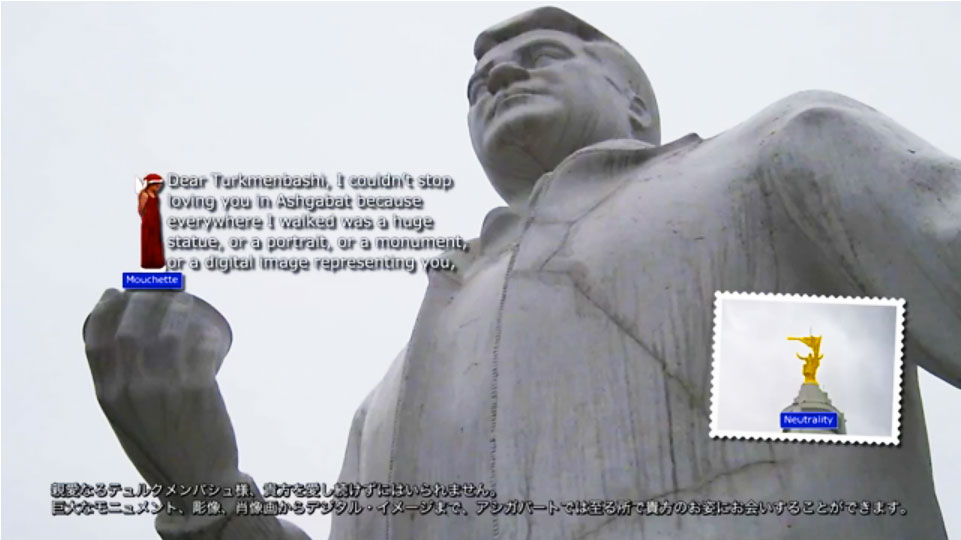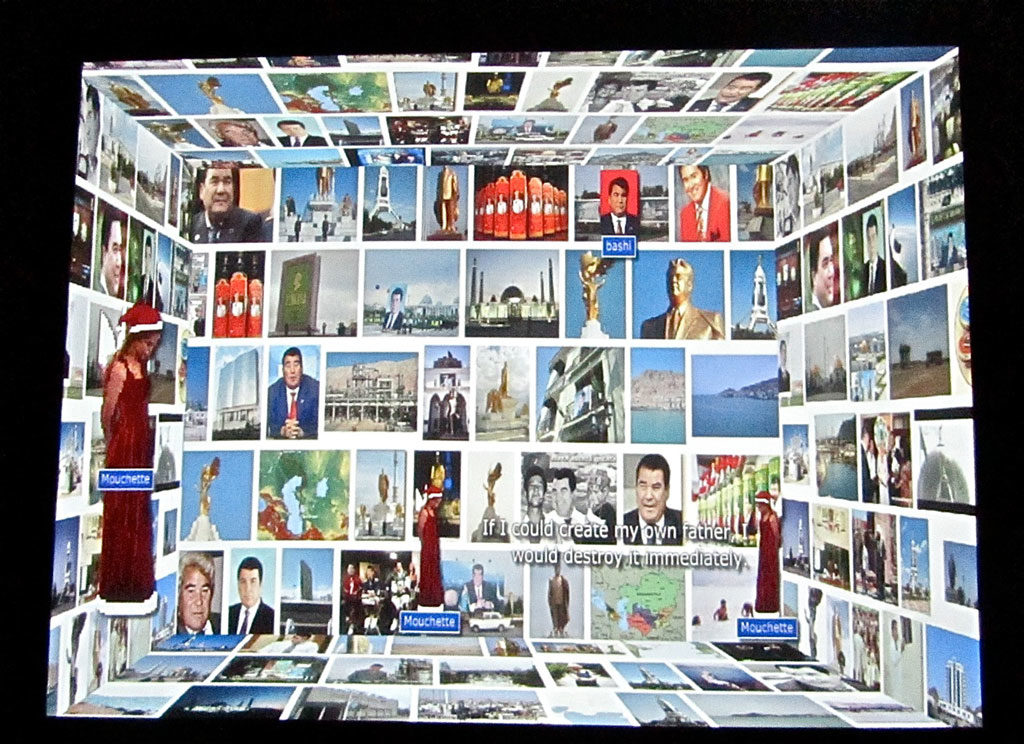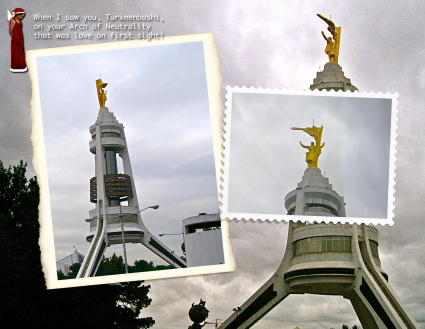
Turkmenbashi Mon Amour is a filmic-composition of image, text and sound, which portrays the cult of personality built around the figure of Turkmenbashi in Ashgabat, the capital of Turkmenistan. The piece is a response to a three-day visit by Neddam to Ashgabat during travels along the Silk Road.
Vimeo registration of the Flash work with japanese subtitles
The piece has a striking audio-visual structure. Photographs that Neddam took while in the city, documenting the many colossal monuments depicting Turkmenbashi, and which were erected during his presidency (from 1991 when Turkmenistan gained independence, to 2005, the year he passed away) serve as a theatrical stage, a background on which a non-linear dialogue between figures takes place.

Mouchette appears in all her naivety, addressing herself directly to Turkmenbashi declaring how she has fallen in love with the image of a God-like, yet human, father of the people (bashi means father) that is presented of Turkmenbashi throughout the city. Appearing on stage in turn in the form of these various representations, Turkmenbashi preaches to Mouchette of the many accomplishments he achieved throughout his presidency.
His proclamations take on a defensive tone in relation to a third figure, one that functions much like the chorus in Ancient Greek tragedy, a non-individualized voice that offers a commentary on the dramatic action. In this instance, the chorus fills in the image of Turkmenbashi with additional information such as how he banned political opposition and public media, gave dress “tips” that were to be taken as law, was a president whose government was steeped in corruption deals with foreign companies, and who spent much of the money made from the exportation of the country’s oil on the creation of monuments and splendor.

What the sound-scape brings to the composition of image and text is precisely a registration of the overall oppressive atmosphere palpable in the photographic images of monuments seen by no one, of the large boulevards driven on by no one, and of the empty hotels and luxury apartments, inhabited by no-one.
Only the figures of Mouchette and Turkmenbashi are seen on this barren colossal stage, where as Mouchette poignantly points-out, what they both share is how they exist purely in the form of representations, they are nothing else than fictive images.
Unlike most of Neddam’s artworks, Turkmenbashi Mon Amour, is meant to be viewed on a large screen in a dark room. It was premiered at the Montreal Biennial in 2011, and has been screened at the “City of Women” festival in Ljubljana in 2012, and the Kitakyushu Biennial World Tour in 2013.
Text by Anik Fournier
More info in “About Mouchette“: Turkmenbashi in Ljubljana and Mesto žensk – City of Women
Video TURKMENBASHI, MON AMOUR / Martine Neddam Japanese) from *candy factory.
TURKMENBASHI, MON AMOUR as a Flash work
Information pdf archived here: KItakyushu_Biennial2013.pdf